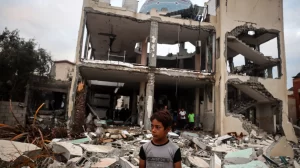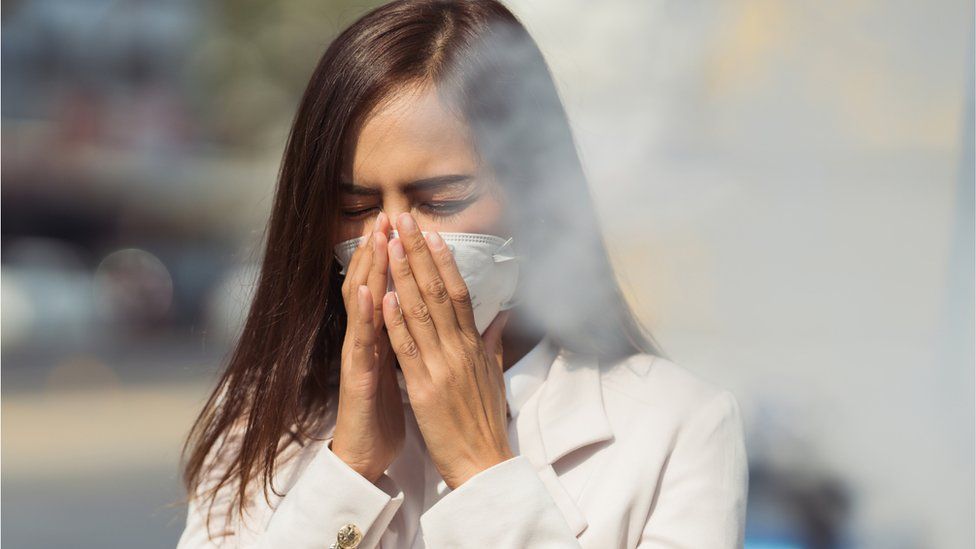The air quality around us can significantly impact our health as well as our quality of life. In Southeast Europe, air pollution is the leading environmental threat to public health. One in ten deaths in the region is linked to exposure to air pollution, resulting in more than 56,000 deaths in 2019 alone, as detailed in the recent publication by State of Global Air.
Integrating air quality, energy, and climate policies is likely to bring substantial health benefits. Across the region, more than 95% of the population lives in areas where levels of fine particulate matter (PM2.5) exceed the World Health Organization (WHO) annual guideline value of 5 μg/m3. Average PM2.5 levels range between 14 and 27 μg/m3 across the countries in the region, with the highest levels in Bosnia and Herzegovina and North Macedonia.
Coal remains a primary source of energy across the region, including energy production and heating during winter, and drives the relatively larger burden of disease from pollutants like PM2.5 compared to other parts of Europe. In fact, coal use is linked to nearly a quarter of all PM2.5-related deaths in Serbia (26%), Bosnia and Herzegovina (24%) and North Macedonia (23%).

The burden of disease due to air pollution is high in Southeast Europe. Breathing polluted air has been linked with increasing a person’s chances of developing heart disease, chronic respiratory diseases, stroke, lung cancer, diabetes, and communicable diseases such as pneumonia. Mothers’ exposure to air pollution during pregnancy has also been linked with an increased risk of their infants being born too small or too early. New and emerging evidence has also linked air pollution with neurodegenerative diseases.
Loss of life expectancy is high too, with countries including Bosnia and Herzegovina, Bulgaria, Montenegro, North Macedonia, and Serbia experiencing a reduction in life expectancy of one year or more. In a recent report, cities in Bulgaria including Plovdiv were found to have among the highest PM2.5-related death rates globally.
68% of all deaths related to air pollution occur in people aged 70 or older
Noncommunicable diseases rank among the most frequent causes of death in the region, with heart diseases, diabetes, and chronic lung diseases including lung cancers, and infections ranking among the top 10 causes of death; many of the same diseases are also linked with long-term exposure to air pollution (see figure). Older people in the region often experience the greatest loss of healthy life-years due to the non-communicable diseases affected by air pollution. In fact, 68% of all deaths related to air pollution occur in people aged 70 or older. Notably, among other interventions, cleaner air is seen as a vital component of Europe’s Beating Cancer Plan.

Furthermore, the burden from non-communicable diseases is rising, driven, among other factors, by high levels of air pollution and populations that are ageing. These data indicate that addressing risk factors such as air pollution can also serve as important pillars within the non-communicable disease prevention and control policies at the national and regional level.
Action to reduce fossil fuel use can lead to cleaner air and better public health
Action to reduce fossil fuel use can lead to cleaner air and better public health. Across the region, access to clean energy remains a key issue; a significant proportion of the region’s population is unable to afford to heat their homes with clean energy or lack access to the centralized heating systems. Moreover, many of the centralized heating systems rely on energy-intensive and polluting lignite power plants or gas.
Combustion of fossil fuels, especially coal, for energy production and in other sectors including residential heating is a significant contributor to outdoor PM2.5 exposures in Southeast European countries. In Serbia, for example, coal contributes to 26% of total PM2.5. In this context, it is worth noting that the International Agency for Research on Cancer has classified both indoor burning of coal and outdoor air pollution as carcinogenic for humans.
Examples of action underway to improve air quality
Because a majority of PM2.5 in outdoor air comes from anthropogenic fuel combustion — including fossil fuels and solid biofuels — integrating air quality, energy, and climate policies is likely to bring substantial health benefits, especially to those most at risk. Solutions to air pollution require long-term and sustained multisectoral efforts to bring attention to its health threats, to identify the policy changes necessary to control it, and to monitor progress over time. There are examples of action underway to improve air quality.
For example, Sofia, Bulgaria is introducing a low emissions zone. In December 2022, the Government of Republic of Serbia adopted the Air Protection Program for the Republic of Serbia for 2022-2030, a first of its document with an action plan in the Western Balkans. Furthermore, in 2022, the European Commission published a proposal to revise and tighten the Ambient Air Quality Directive; since then, members of the Environment, Public Health and Food Safety (ENVI) Committee of the European Parliament have voted in support of the proposal and a full vote is scheduled for September 2023.
To achieve clean air across the region, local, national, and regional collaborations are necessary
Ultimately, to achieve clean air across the region, local, national, and regional collaborations are necessary. Published evidence on air pollution and its health impacts is slowly building up. Now, it is important to not only expand and improve access to air quality data and support generation of health evidence, but to also support engagement and collaboration among researchers, physicians, and practitioners with the goal of centering health in informed air pollution decision-making.
Detailed data and reports on air quality and health in Southeast Europe in English, Bulgarian and Serbian are available at http://www.stateofglobalair.org.
Source : Balkan Green Energy News






































